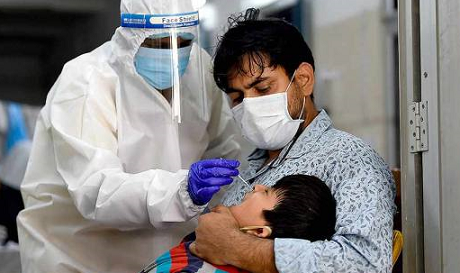Imagine a very different 2021 festive atmosphere from the one that we are just experiencing. A year from now, December 2021, India is amid a massive vaccination initiative. You along with your close ones have already received the dose of vaccination and while facemasks and social distancing are as necessary as of now, the atmosphere is still much relaxed than 2020.
Feels good? There’s a reason too. The fore-running covid vaccine candidates have reached the threshold of the final trials and just a few months away from rollout in India. While it is a sigh of relief that the wait for a vaccine is about to end but could India be vaccinated by 2021?
Prime minister Narendra Modi has already announced the prioritization of individuals to be vaccinated, but there is still a lot at stake. Currently, India is not aiming at covering all 1.3 billion people Covering 70% would be sufficient to stop the pandemic. That still amounts to over 900 million, but children under 10 and pregnant women should also be excluded because none of the vaccines has been tested for these groups.
Now the operational target is therefore less than 700 million and if this has to be achieved within a year, we need 1.4 billion vaccine doses, assuming a two-dose vaccine. Now securing these 1.4 billion doses over 12 months is turning out to be a major challenge for India. That’s because rich countries have already reserved billions of doses-equal to more than a year’s supply-of vaccines for their citizens, leaving little for another middle- and lower-income countries.
Rich nations have bought more than half of all vaccines
A report from Alliance, a coalition including Oxfam, Amnesty International, and Global Justice Now shows that rich nations have bought 54% of the total stock of the world’s most promising vaccine, despite being the home to just 14% of the global population. These wealthy nations have purchased enough doses to vaccinate their entire populations three times over by the end of 2021 and this too with an option to expand the deals and acquire even more- undermining many countries’ ability to make timely purchases.
For instance, Canada has bought 358 million doses for its 38 million citizens. That’s nine doses per person. The country is still in talks with pharma companies and could end up buying 56 million more doses, taking it to ten doses per person. The United States alone has bought nearly a sixth of the world’s supply.
While the major vaccine candidates are still in the varying stages of progress, some candidates like Valneva, Sanofi has not even entered the clinical trials stage and under such a situation, considering the piling up of vaccine doses by wealthy nations, it could take until 2024 for many low-income countries to obtain enough number of doses to immunize their populations.
Considering the situation, the rich countries were also pressurized to alter their plans. The developed nations are being encouraged to stagger the delivery of their own doses so the developing world won’t be stuck at the end of the line.
Countries like Canada and the United States are being asked to donate the vaccines. But even if rich countries donate their excess vaccines, the rest of the world will not have all the doses it needs by the end of next year.
Besides that, much of the world’s population, even after stocking, likely to struggle to get the dose of vaccine. That is because manufacturers will need time to ramp up production after getting regulatory approval, and countries will not receive all their doses at once.
Take Pfizer for instance. It has said that it will manufacture 1.3 billion doses in 2021 and the US government has purchased 100 million from that but it would actually have to wait till June to receive them.
Also, the countries have made private contracts and companies have made various time frames, it is unlikely to say when the other countries will receive it.
Pfizer’s and Moderna’s commitments are on par with their production abilities, but there appears to be little room for growth.
Local vaccine manufacturing will be playing a vital role here.
Some middle-income countries like India and Brazil are developing their own vaccines, although they are still in the early phases of trials. The Serum Institute of India (SII), which has contracts for large quantities of the AstraZeneca and Novavax vaccines, has promised the Indian government half of its output.
“India gets priority because it’s my home country,” Adar Poonawalla, the SII chief executive, said in an interview.
AstraZeneca and Oxford University have promised to make 64% of their doses available to developing countries. Also, apart from being cheaper, the vaccine can be stored at fridge temperatures, making it easier to distribute across the globe.
However, it would reach only 18% of the world’s population by next year “at most.”
To help low and middle-income countries immunize at least 20% of their population, a coalition of international agencies and nonprofits, called Covax, is raising funds to secure 2 billion doses by the end of 2021.
But the initiative has struggled to raise enough money to meet its target; even if it did, a billion doses would be enough for less than 20 percent of each poor country’s population.
Countries and companies are just placing their bets- no one knows what 2021 has stored for them and by chance, if it turns out this is a vaccine that is required every year, like the flu shot, then all bets are off.


